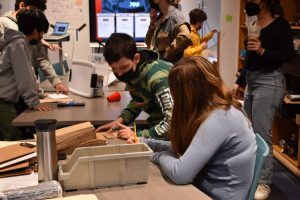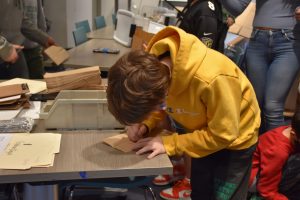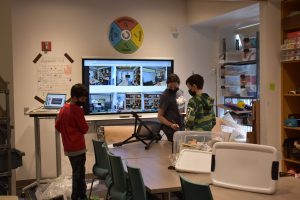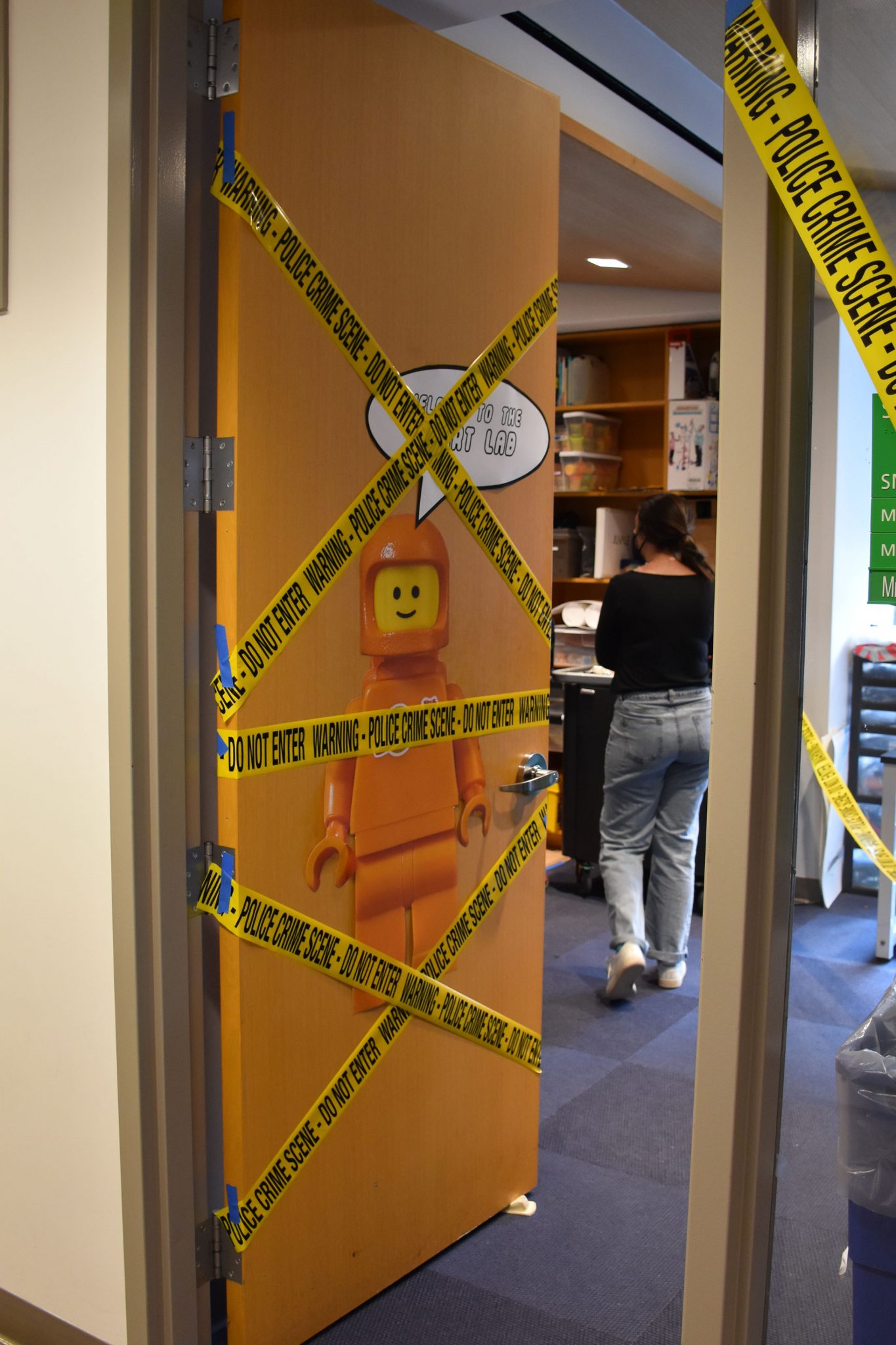 As Green Cluster students walked into the SMART Lab one fine April day, they witnessed quite a scene. Bins were toppled over with the contents strewn about, footprints covered the floor, and the beloved robot was missing. All of this could mean only one thing: a crime had taken place!
As Green Cluster students walked into the SMART Lab one fine April day, they witnessed quite a scene. Bins were toppled over with the contents strewn about, footprints covered the floor, and the beloved robot was missing. All of this could mean only one thing: a crime had taken place!
… At least that’s what Science Teacher and Technology Integrator Molli Grady wanted them to think. As part of a culminating project for their forensics unit, she had students participate in a mock crime scene investigation where they had to uncover who had stolen the robot.
“A crime was committed in our SMART Lab, and the Gaynor Forensics Team was called in to assess the scene, collect and analyze evidence, and reveal who committed the crime,” Ms. Grady said. “The crime? A stolen robot! They used their investigative skills, along with alibis and motives of four suspects, to find out ‘whodunnit!’”
The Green Cluster’s forensics unit shows students the importance of thinking critically and of careful observation in an interesting and engaging way. Science Teacher Andrew Prasarn previously worked to perfect the mock crime scene activity, and he helped Ms. Grady to make this year’s a success.
“There are so many pieces to the puzzle when it comes to crime scene investigation, so students learn that there is often more than meets the eye,” Ms. Grady said. “Forensics science is a real application of biology, chemistry, and even physics! This unit incorporates hard science and provides an engaging way to use it practically.”
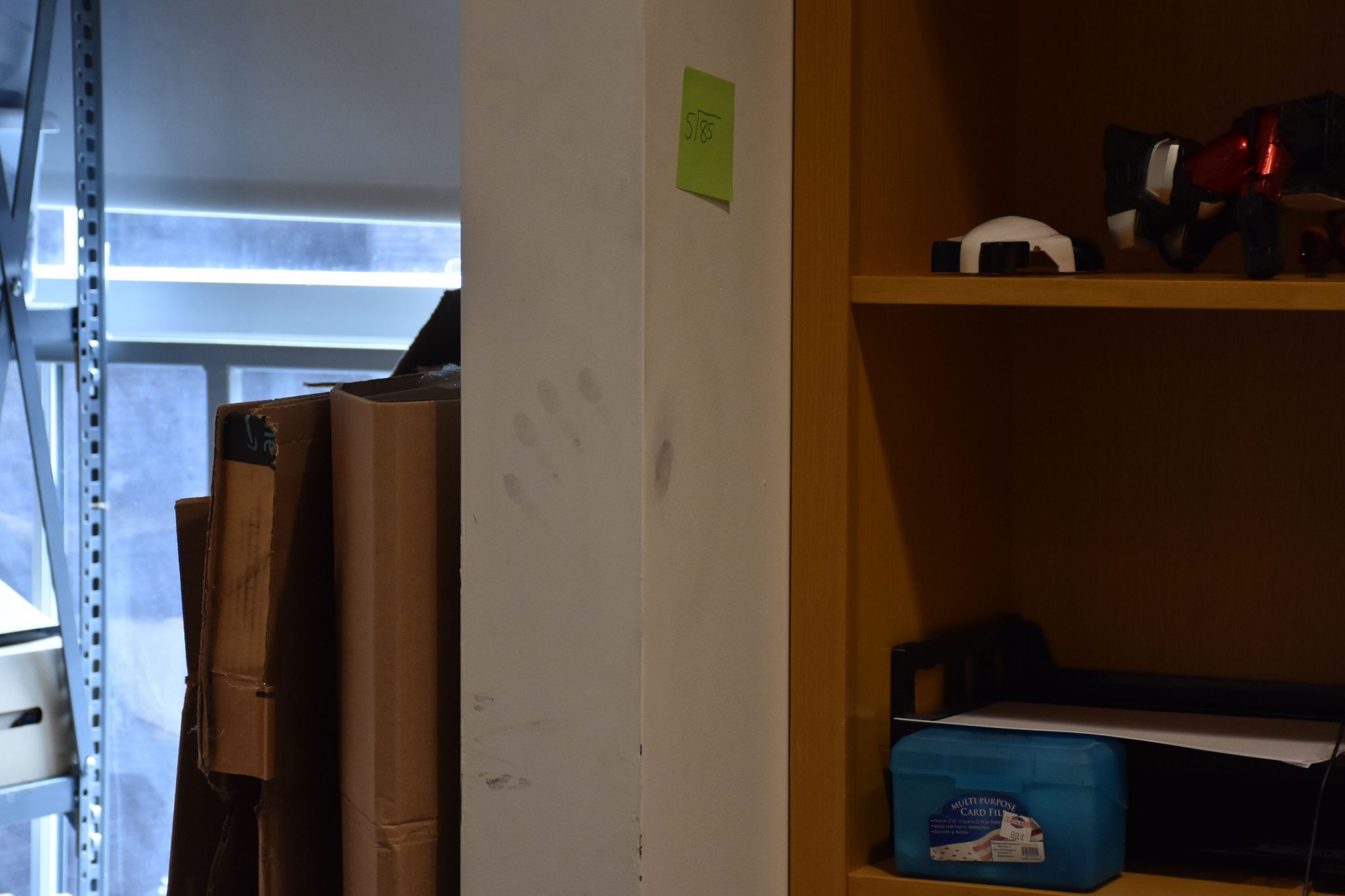
Prior to the investigation, students learned about and practiced various skills necessary to solve a crime. These skills included fingerprinting, handwriting analysis, hair and fiber analysis, shoe print analysis, and chromatography. Ms. Grady said this multisensory and multidisciplinary activity teaches students that forensics is not the same as in television shows, and there are many parts that go into solving a crime.
“When we complete our labs, the information is very specific,” she said. “The culminating project puts it all together for the students to experience what real life forensics scientists do and apply all that they have learned.”

